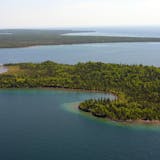The Dakota Access Pipeline, an oil pipeline that starts in North Dakota and will route to Illinois, has been marred by a steady stream of misinformation and rumor. As governor of North Dakota, I feel it is important to share the facts of how the route was permitted through our state, as well as our North Dakota law enforcement's exemplary management of protesters who have made national headlines.
Many around the world have come to know this project as simply "DAPL," and have used limited information shared through traditional and social media to form opinions about the pipeline, and North Dakota as a whole. Much of this information is neither accurate nor fair.
North Dakota's connection to the pipeline began in 2014 when Energy Transfer Partners officially filed its application for corridor compatibility and route permit through our Public Service Commission. It is the job of our three-person elected PSC to handle all such matters according to state law.
A 13-month review process included public-input meetings held across the state. As a result of these meetings, the route was modified 140 times to ensure environmental safety, including a shift to follow an existing gas pipeline corridor so as not to create an entirely new pathway. The final route was legally approved and permitted by the state, the location for the crossing of the Missouri River was approved by the U.S. Army Corps of Engineers, and the easement was forwarded to the corps' assistant secretary for signature.
There are some essential facts in this unfolding situation:
First and foremost, not one person from the Standing Rock Sioux tribe attended any of the meetings and hearings publicly noticed by state regulators over the course of two years.
Second, the pipeline's permitted route never crosses tribal land. Those opponents who cite the 1851 Treaty of Ft. Laramie to dispute who owns the lands conveniently ignore the later treaty of 1868.
Finally, with respect to the pipeline's proximity to the Standing Rock Reservation's water supply, its existing intake was already scheduled to be shut down by the end of 2016 and replaced by an intake in South Dakota, some 70 miles away.


